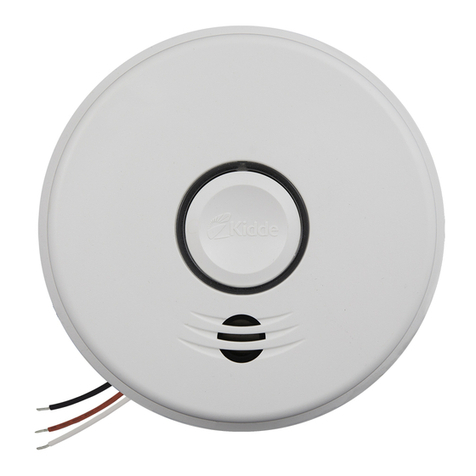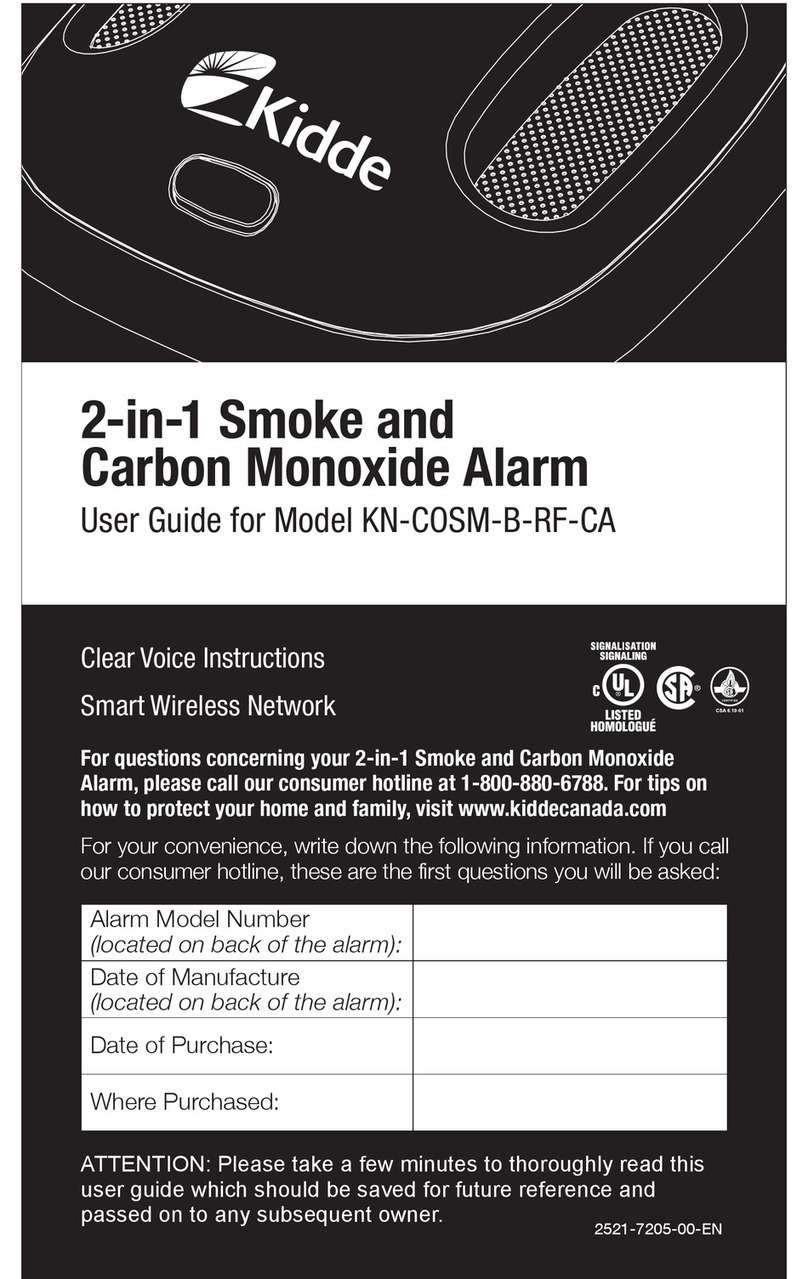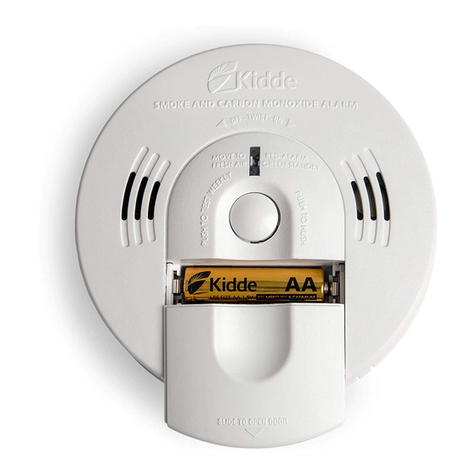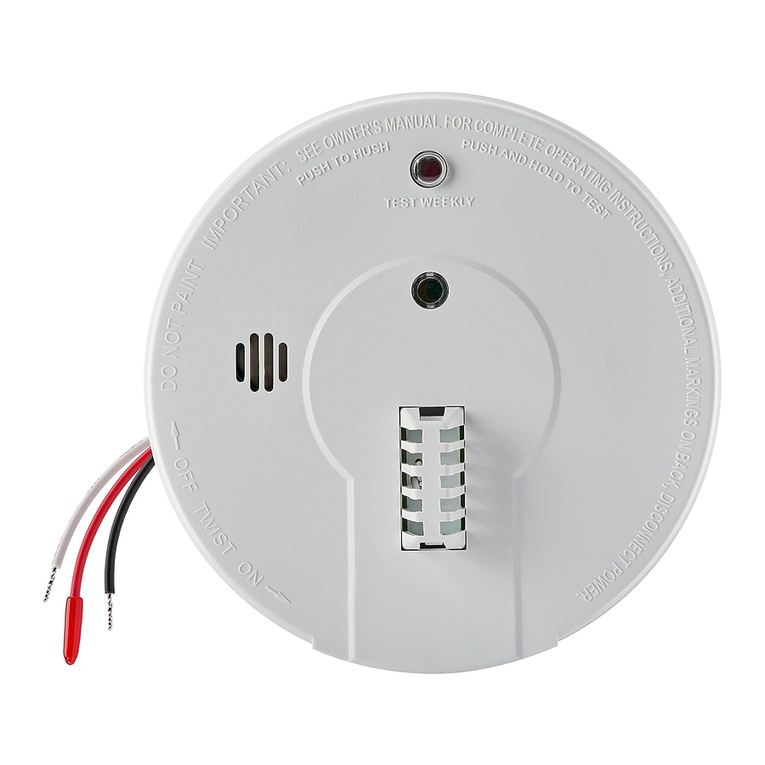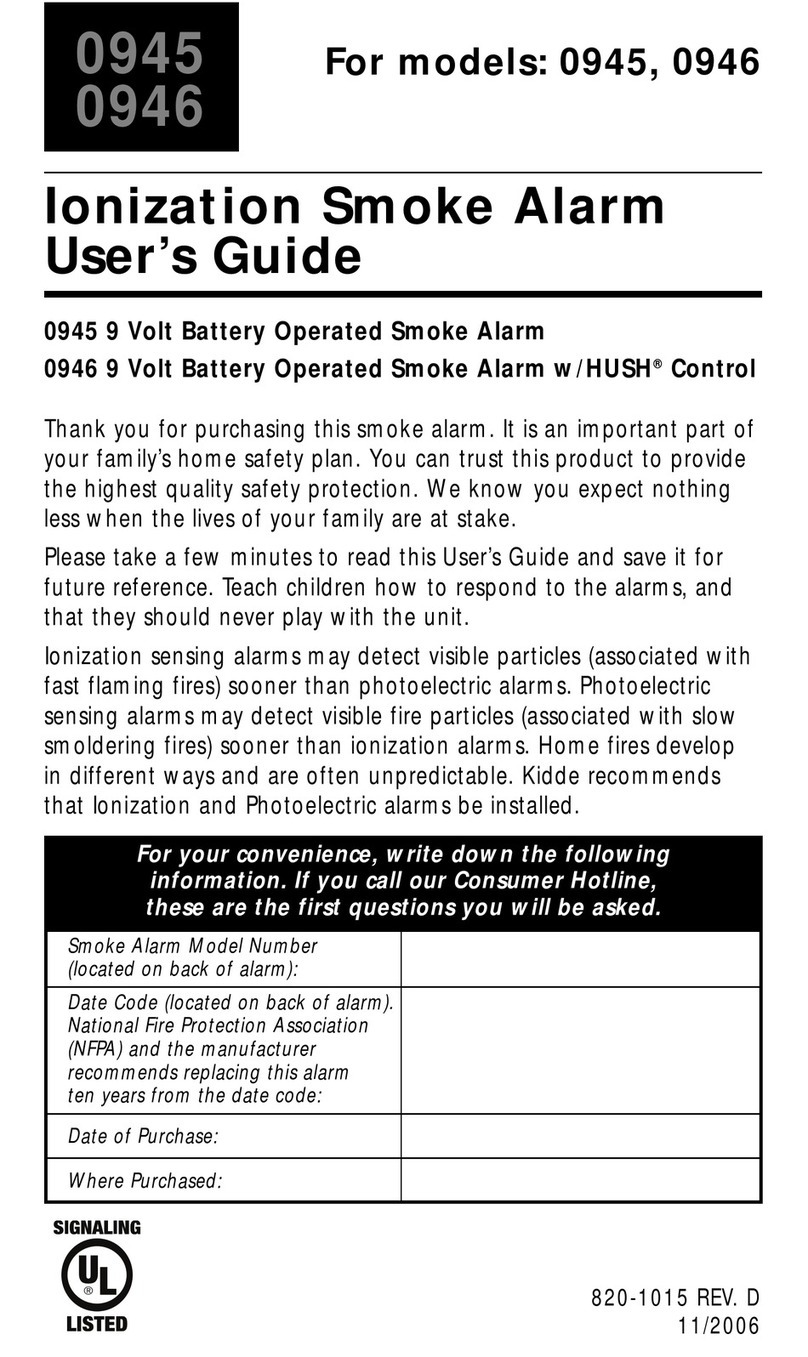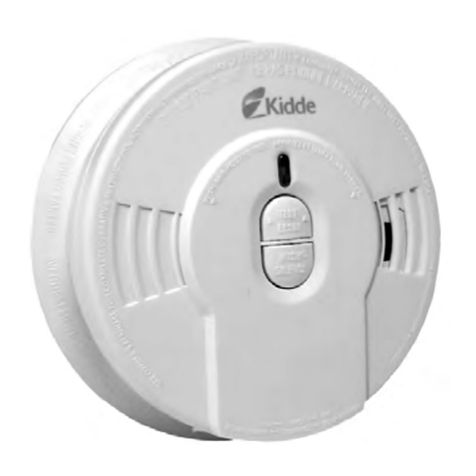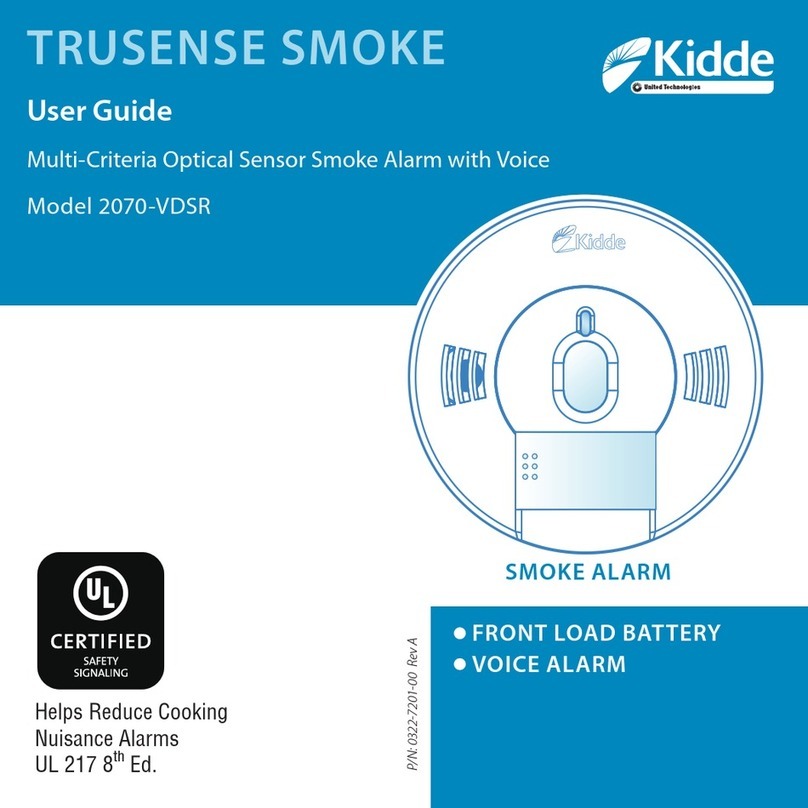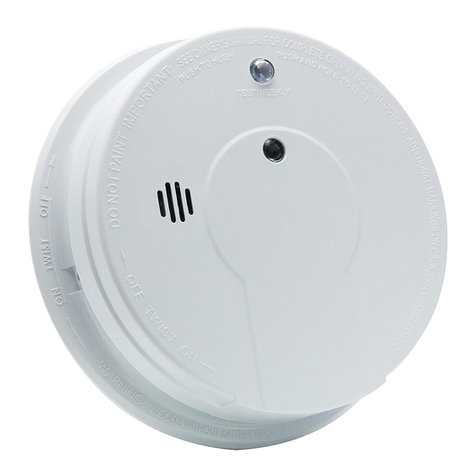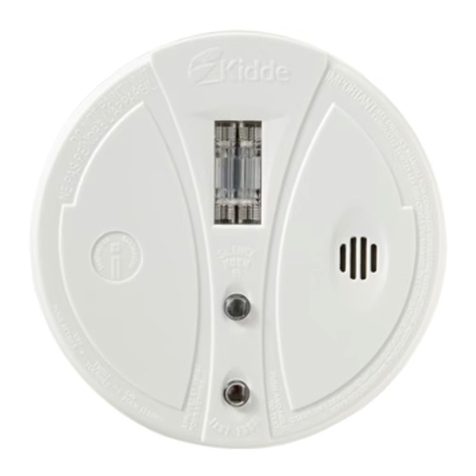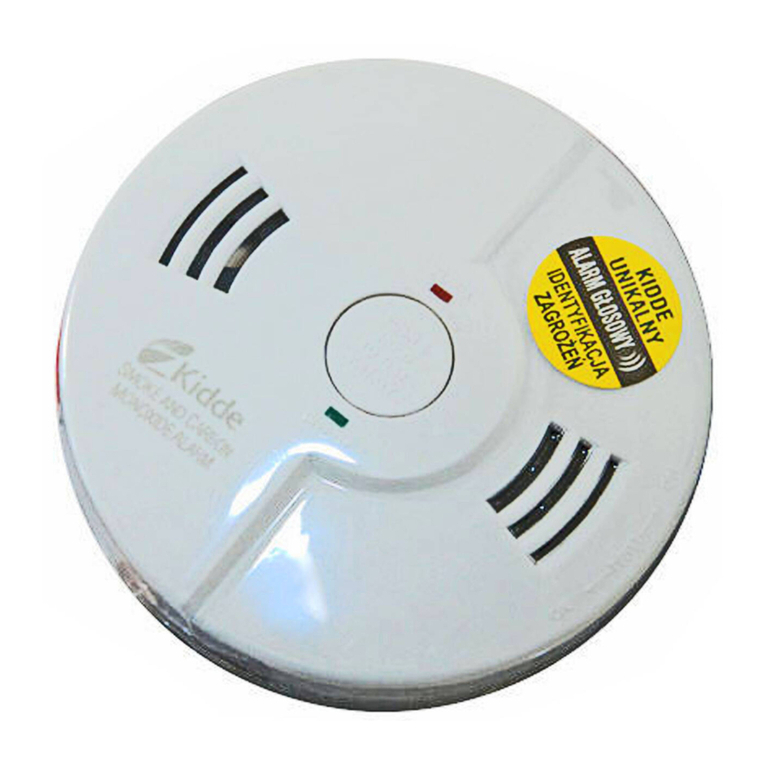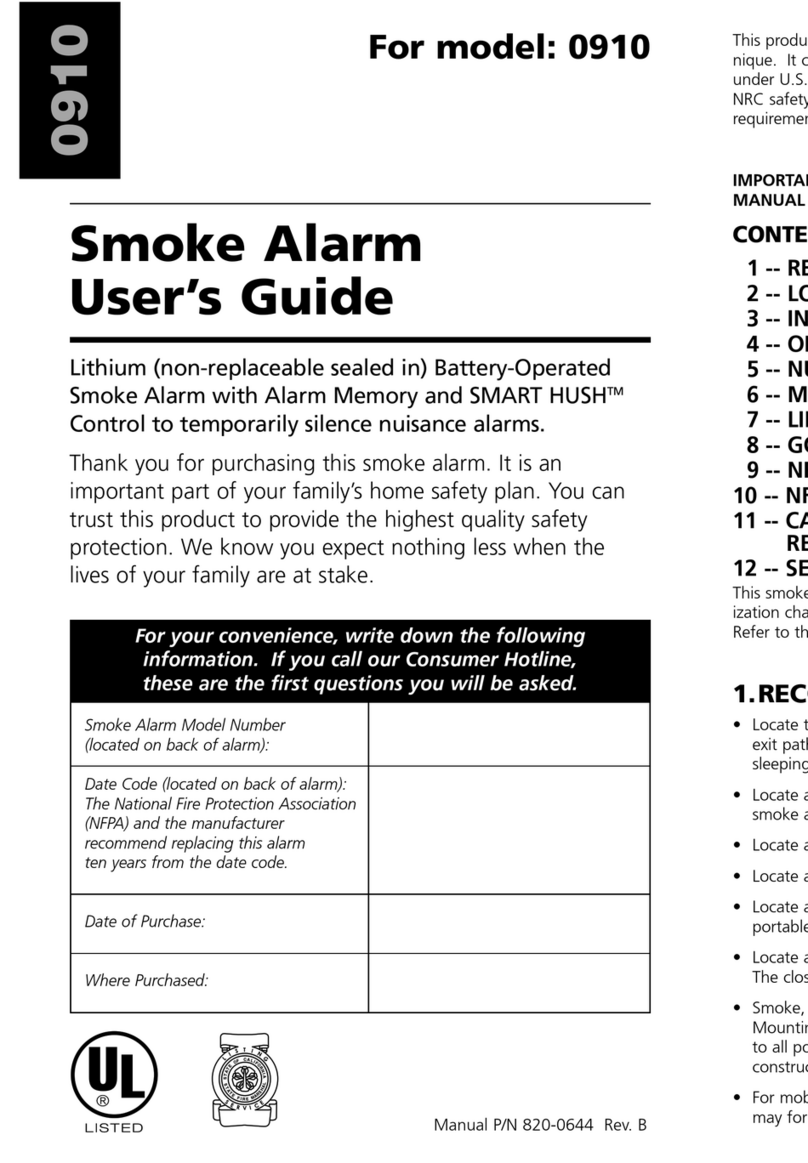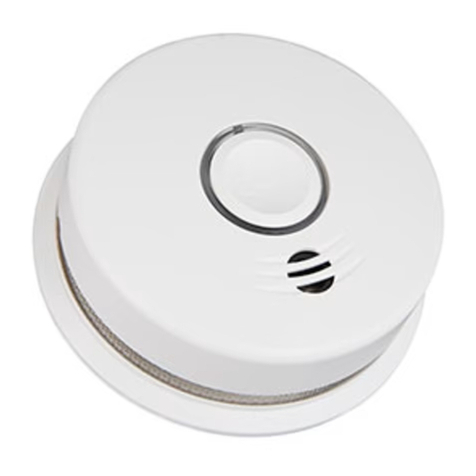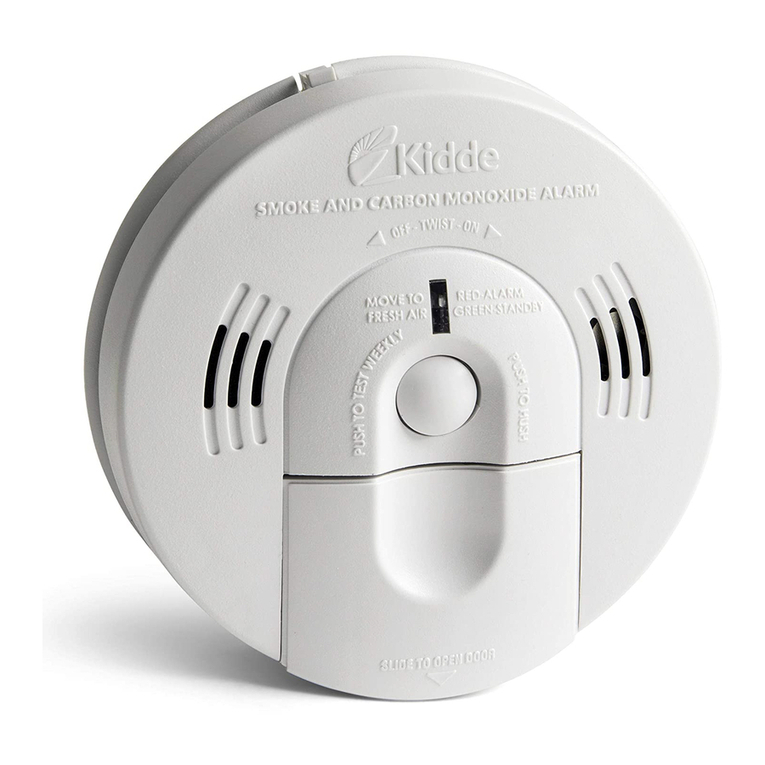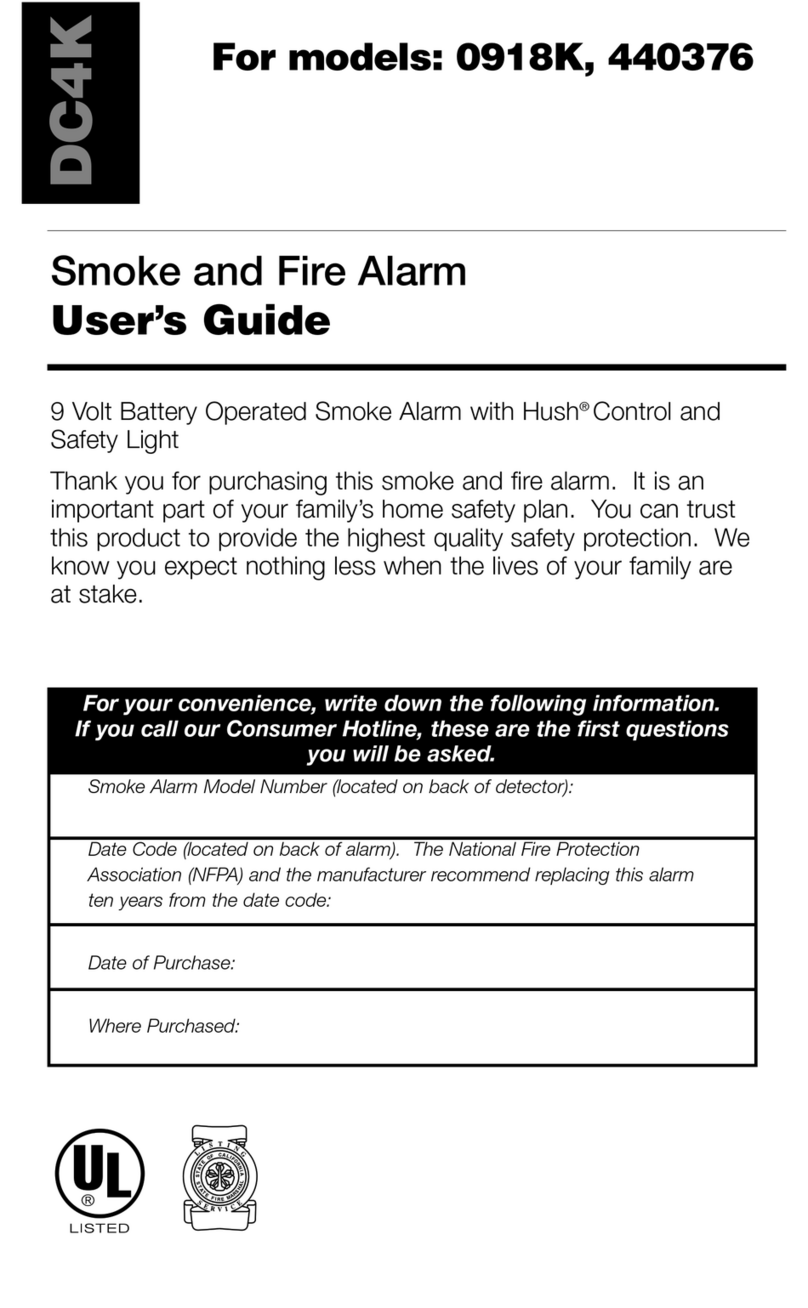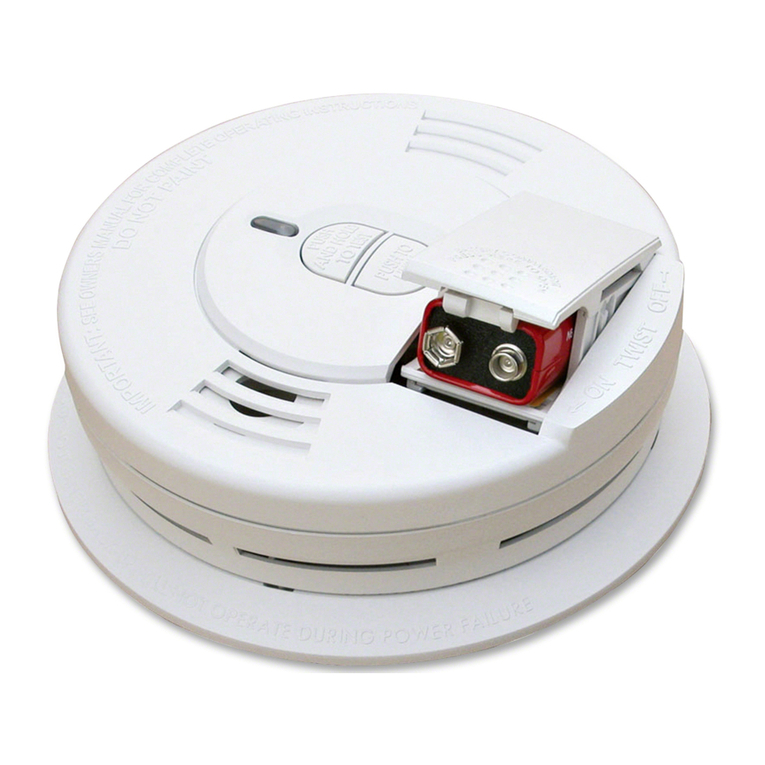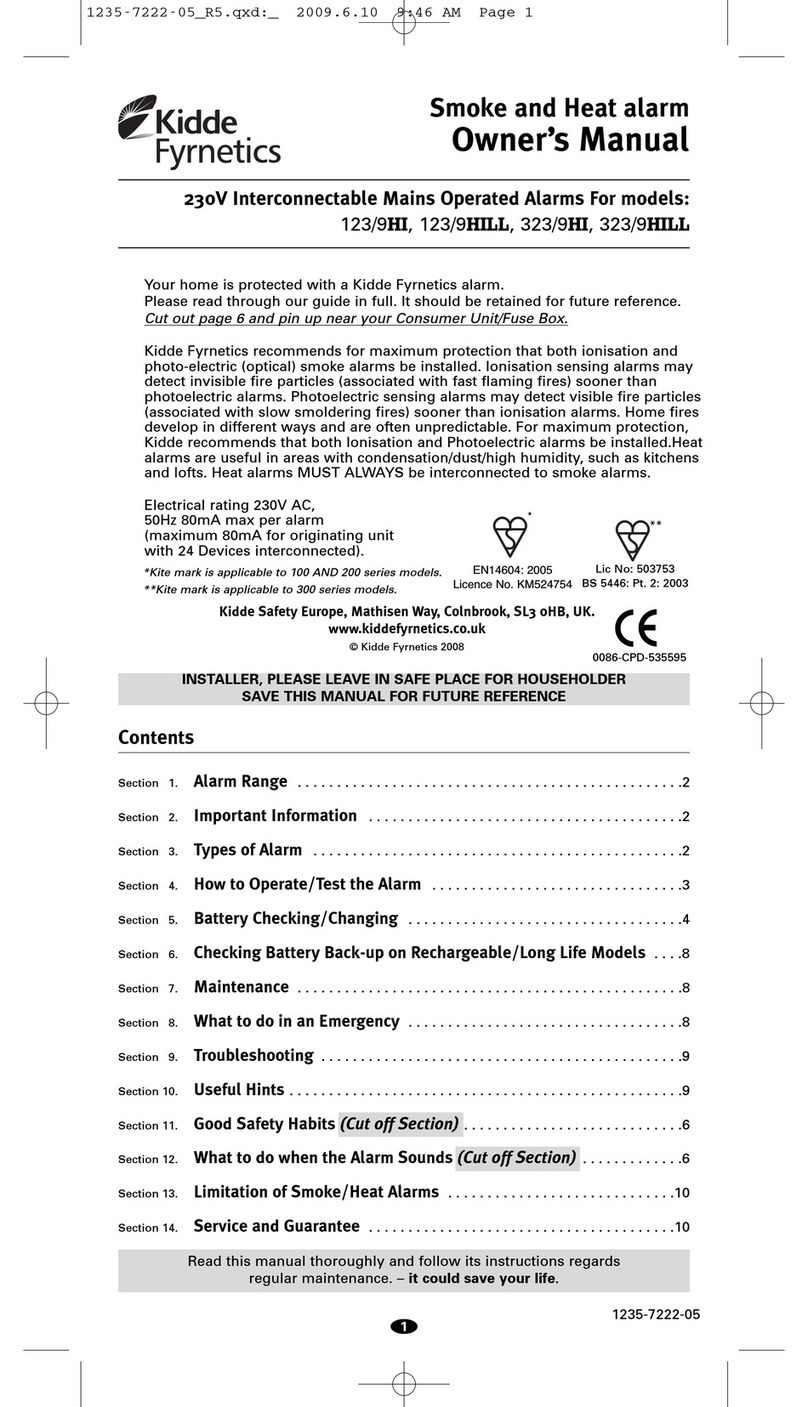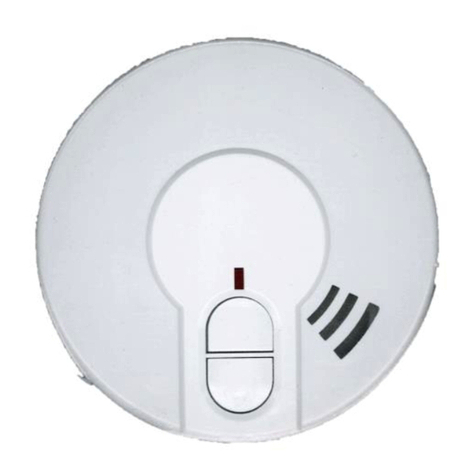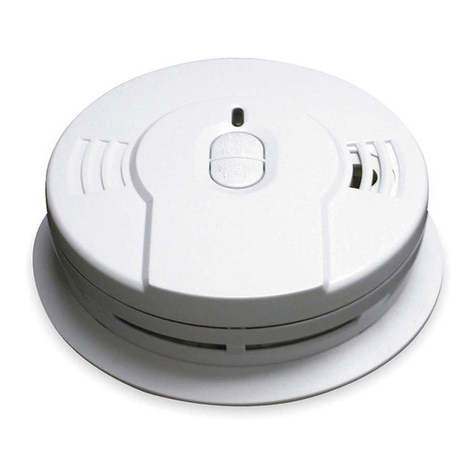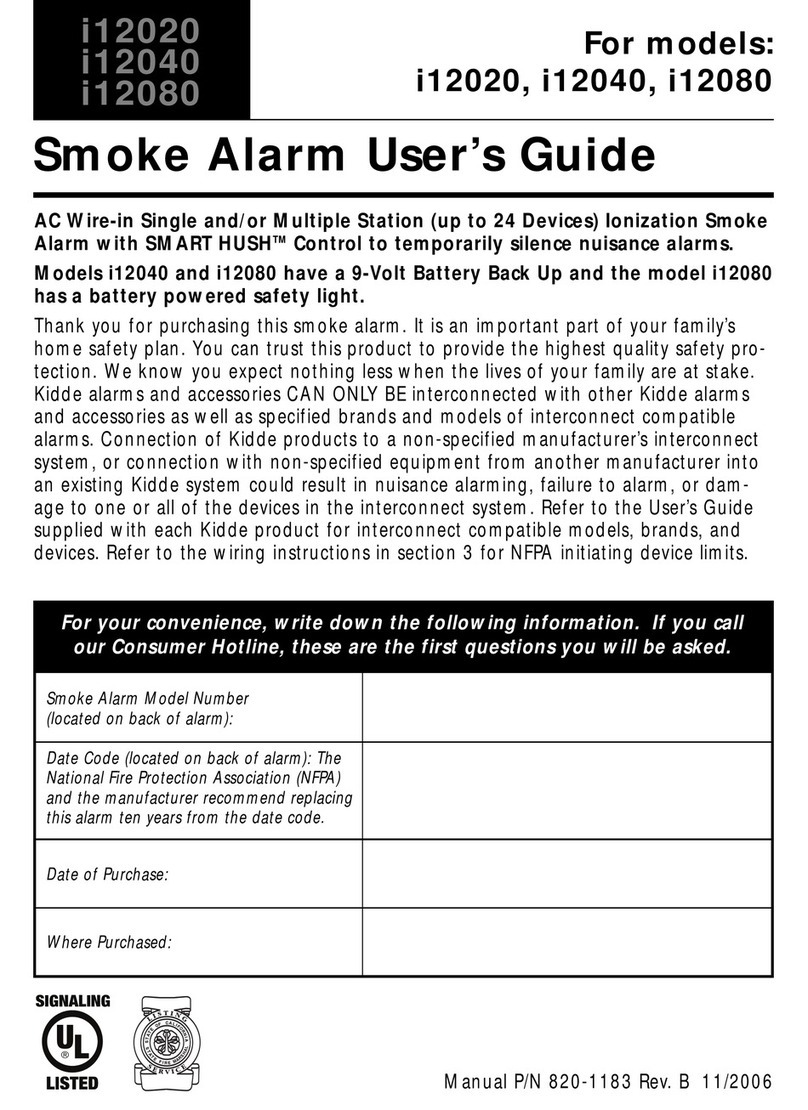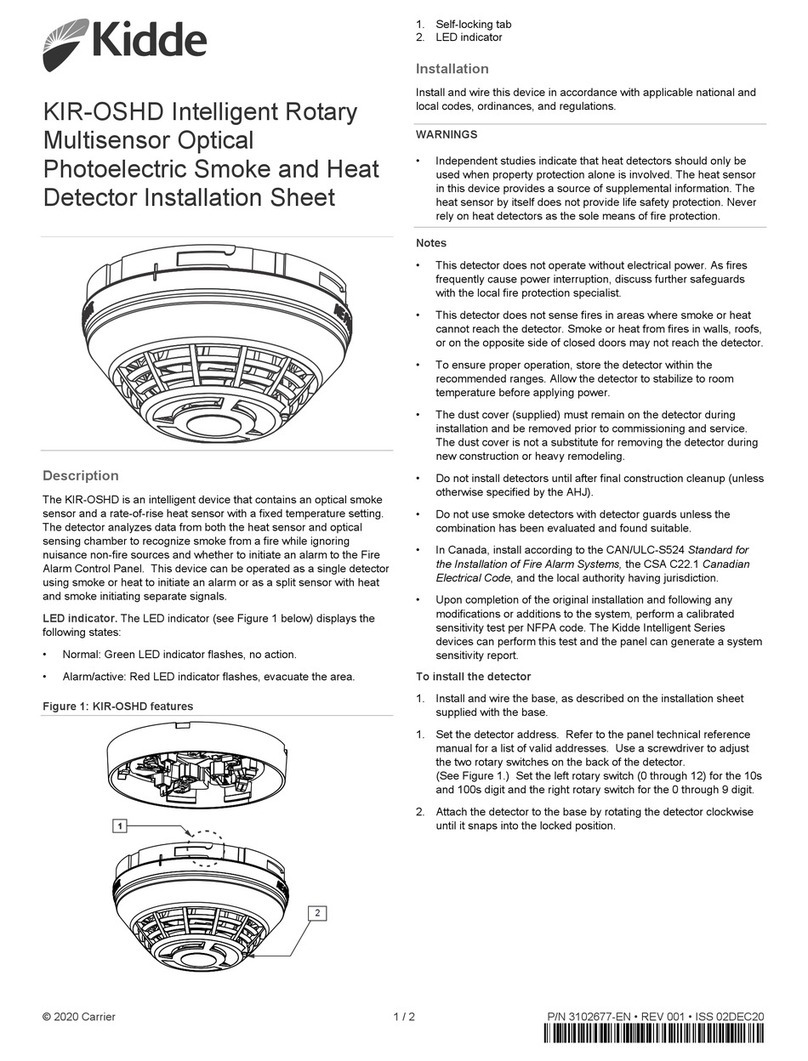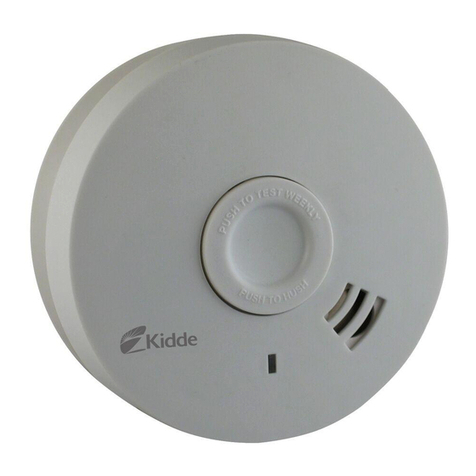
moke Alarm
The smoke alarm monitors the air for pro ucts of combustion
that are pro uce when something is burning or smol ering.
When smoke particles in the smoke sensor reach a specifie
concentration, the alarm/voice message warning system will
soun , an be accompanie by the flashing re LED light. The
smoke alarm takes prece ence when both smoke an carbon
monoxi e are present.
WARNING: PLEA E READ CAREFULLY AND
THOROUGHLY
NFPA 72 states: Life safety from fire in resi ential occupancies is
base primarily on early notification to occupants of the nee to
escape, followe by the appropriate egress actions by those
occupants. Fire warning systems for welling units are capable of
protecting about half of the occupants in potentially fatal fires.
Victims are often intimate with the fire, too ol or young, or
physically or mentally impaire such that they cannot escape
even when warne early enough that escape shoul be possible.
For these people, other strategies such as protection-in-place or
assiste escape or rescue are necessary.
• Smoke alarms are evices that can provi e early warning of
possible fires at a reasonable cost; however, alarms have
sensing limitations. Ionization sensing alarms may etect
invisible fire particles (associate with fast flaming fires) sooner
than photoelectric alarms. Photoelectric sensing alarms may
etect visible fire particles (associate with slow smol ering
fires) sooner than ionization alarms. Home fires evelop in
ifferent ways an are often unpre ictable. For maximum
protection, Ki e recommen s that both Ionization an
Photoelectric alarms be installe .
• A battery powere alarm must have a battery of the specifie
type, in goo con ition an installe properly.
• Smoke alarms must be teste regularly to make sure the
batteries an the alarm circuits are in goo operating
con ition.
• Smoke alarms cannot provi e an alarm if smoke oes not
reach the alarm. Therefore, smoke alarms may not sense fires
starting in chimneys, walls, on roofs, on the other si e of a
close oor or on a ifferent floor.
Features and General Information
6
2550-7201-01(i12010SCO)_V4.qxd:_ 2014.2.20 10:24 AM Page 8

